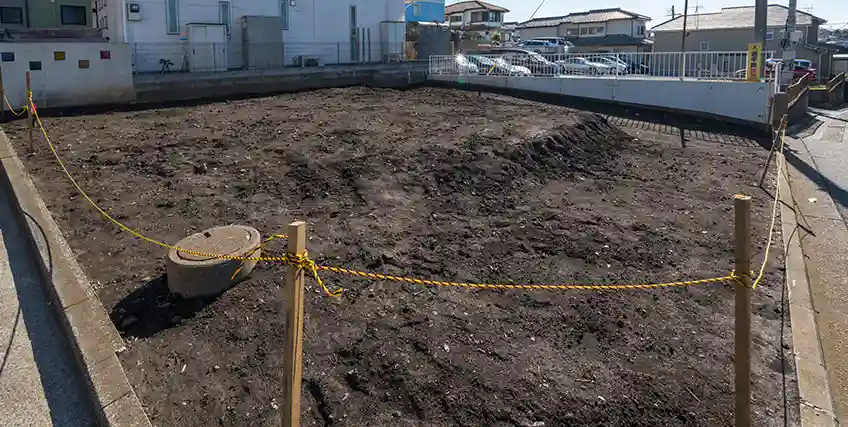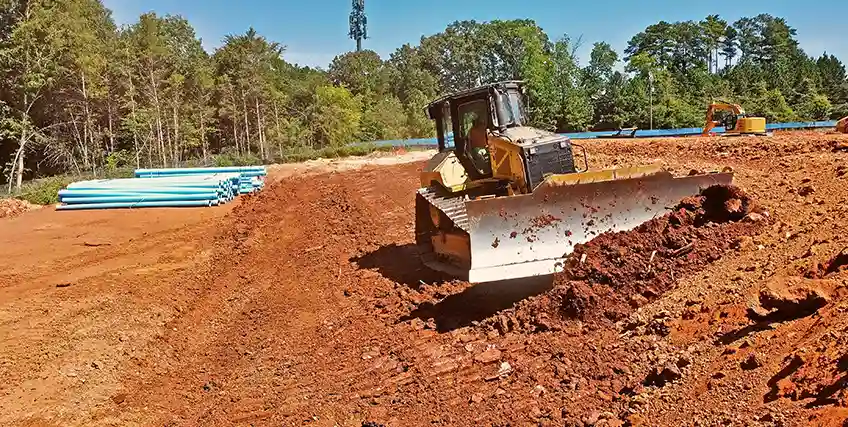Top Land Loans for Small Business Owners and Builders
May 26, 2025 | Last Updated on: May 26, 2025

If you're a small business owner or builder looking to expand, buying land can be a smart move. Whether you're planning to develop commercial real estate, launch a construction project, or hold land as a long-term investment, it's a big step. But it's also expensive. Land is not cheap, and paying upfront can drain your business cash flow.
That's where land acquisition finance comes in. It’s a way to borrow funds to purchase land for commercial use. With the right financing, you can secure a strategic property without straining your business. From land acquisition loans to development financing, options exist for nearly every kind of land deal - raw, entitled, or developed.
This guide breaks down everything you need to know. We’ll explain how different financing options work, what terms to look out for, and how to pick the right structure for your business. You’ll also learn what lenders evaluate before they say yes to your land deal. If you’re a builder, contractor, or small business owner eyeing land as your next move, this is the clarity you need.
What Is Land Acquisition Finance?
Land acquisition finance helps businesses buy land intended for commercial development or expansion. It can be used to fund different types of land:
- Raw land: Undeveloped, no access to utilities.
- Entitled land: Approved for use but not built on.
- Developed land: Ready with utilities and permits in place.
Financing varies based on the land type. Raw land is riskier and harder to value. You’ll likely need a larger down payment. For developed land, you may get better interest rates and a longer repayment timeline.
Most financial institutions base their loan offers on location, zoning, land value, and your business plan. They’ll also look at your experience with real estate or development projects. That’s why it’s important to prepare well.
Borrowers often use this financing to kickstart projects like retail spaces, industrial parks, or affordable housing. Some combine it with construction loans to immediately build on the site. In that case, land acquisition development loans are used. These help fund both the land purchase and initial building costs.
Keep in mind, land deals have fewer comps than real estate, so appraisals can be tricky. Lenders want strong documentation and often ask for surveys, title reports, and environmental checks.
Types of Land Acquisition Finance
Your financing depends on how soon you’ll use the land, your credit, and your goals. Here are common types of land acquisition finance.
Bank Loans
Banks offer traditional land acquisition finance with competitive rates and longer terms. You’ll need strong credit and a solid business plan. Expect 20 to 50 percent down payment, depending on land type. Raw land is riskier, so banks will offer less favorable terms. This type of land acquisition finance works best when you're buying entitled or developed land with a clear use case. Banks may also require title insurance and environmental checks. If your financials are solid, you may secure favorable repayment terms and lower interest rates, especially for real estate in growing markets.
SBA 504 and 7(a) Loans
If you’re looking for long-term, fixed-rate financing, SBA-backed loans are worth exploring. The SBA 504 loan is designed for real estate or equipment, making it a great fit for land and development costs. SBA 7(a) loans are more flexible. Both require good credit and proven cash flow. These are ideal for small businesses planning to build on land. SBA financing is more accessible for qualified applicants and supports commercial real estate expansion and multifamily development.
Private Lenders and Hard Money Loans
Need quick funding? Private lenders or hard money firms offer fast closings. Their land acquisition lending terms are shorter and come with higher interest rates. They work well for redevelopment projects or when traditional lenders won’t approve your application. These loans are asset-backed and ideal for those with a solid exit strategy. You’ll face higher upfront fees and stricter loan-to-value ratios but gain faster access to funds.
Land Acquisition Development Loans
These loans combine land acquisition financing with funding for construction. Perfect if you’re ready to build right after purchase. These loans typically require detailed zoning and architectural plans. They’re ideal for small builders working on multifamily or commercial real estate development. You’ll need to show feasibility reports, permits, and an accurate development financing projection. These loans streamline funding, making them suitable for turnkey projects.
Understanding Common Loan Terms and Conditions
Before you sign anything, know what terms impact your cost and flexibility. Here’s what to watch:
Loan-to-Value (LTV) Ratio
This defines how much a financial institution is willing to lend. For land, the LTV is usually between 50 and 70 percent. Lower LTV means you’ll need a higher down payment. Raw or undeveloped land typically gets the lowest LTV.
Interest Rates and Repayment Terms
Rates vary by land type and lender. Some land acquisition finance offers interest-only payments early on, especially for bridge loans or short-term use.
Collateral and Guarantees
Because land doesn't generate income, most land acquisition finance requires a personal guarantee. Some also ask for cross-collateralization, linking this loan to another business or property asset.
Due Diligence and Documentation
Expect to provide land surveys, environmental reports, and proof of zoning. If it’s for a subdivision or commercial project, you’ll need a full business plan and contractor details.
What Makes a Land Deal “Finance-Ready”?
Not every parcel is finance-worthy. Here’s what lenders evaluate in a land deal:
Development or Business Plan
Your plan should outline what you’ll do with the land, projected revenue, and timelines. Without this, lenders may hesitate. A detailed plan is essential for land acquisition development loans. Include cost breakdowns, return projections, and contractor profiles. If the land will be used for affordable housing, commercial buildouts, or redevelopment, tailor your narrative accordingly. The more clarity you provide, the more comfortable lenders will be.
Location and Zoning
Land near highways or in up-and-coming commercial areas tends to be easier to finance. Properties must be properly zoned. Changing zoning later is a long and expensive process. You’ll need documents confirming the zoning use aligns with your project. Lenders prefer areas with increasing property values and economic activity. Proximity to infrastructure is a plus. For real estate loan approval, zoning is non-negotiable.
Feasibility and Access to Utilities
Lenders want to know if the land is buildable. That means having access to water, sewage, power, and roads. Raw land without these is considered high-risk. Projects requiring major utility work may trigger higher costs or delays. Feasibility studies are crucial for undeveloped land and large-scale development projects. Consider working with civil engineers to present a solid build-readiness case.
Down Payment and Equity Contribution
You’ll likely need to contribute 20 to 40 percent of the purchase price upfront. The higher your equity, the better your terms. For real estate investments, lenders want to see you have skin in the game. A larger equity contribution may also reduce the need for additional guarantees. Some lenders may ask for personal collateral if the development financing involves speculative returns.
How to Choose the Right Loan Option
Choosing the right land acquisition finance product depends on your needs, timeline, and risk appetite.
Assess Your Timeline
If you plan to develop immediately, consider land acquisition finance or construction financing. For long-term investments, look at fixed-rate real estate loan options.
Evaluate Financials and Credit Score
Banks and SBA lenders require strong financial and credit. If that’s not possible, debt financing through private channels may be your fallback.
Understand Rate Structures and Hidden Costs
Don’t just compare APR. Ask about origination fees, prepayment penalties, and balloon payments. These affect your cash flow in the long run.
Compare Local and National Lenders
Local banks may offer flexibility. National firms may offer better tech and speed. Evaluate both. And if you need help, hire a loan broker familiar with land development.
Conclusion
Land can be a powerful asset if used well. With the right land acquisition finance, small business owners and builders can secure high-potential sites for future growth. But not every plot is worth the cost.
Make sure you understand the repayment terms, the risks, and the true development costs involved. Align your loan with your business plan. And never rush into a deal without solid underwriting.
Whether it’s for affordable housing, a commercial buildout, or future resale, a smart land purchase starts with the right financing.
FAQs on Land Acquisition Finance
What is land acquisition finance and how is it used?
It’s a funding method for businesses to buy land. You can use it for raw land, entitled sites, or ready-to-build plots. Lenders assess zoning, utility access, and use case. Good financials and detailed plans help improve terms. This form of financing helps preserve working capital while securing long-term assets for your operations or future development projects.
Are land acquisition loans hard to qualify for?
For raw or undeveloped land, land acquisition finance might be hard to secure. Lenders want strong credit, documented business use, and equity. If you lack these, rates increase. A well-prepared borrower with surveys, zoning info, and development financing plans will be better positioned. It’s harder than a typical mortgage, but strategic preparation makes it possible.
Can I use land acquisition lending for future resale?
Land acquisition lending for speculative resale can potentially carry more risk. Lenders want to see a resale timeline and projected return. If land is being held short-term, your interest rate may be higher. Some borrowers use bridge financing or balloon loans with future refinancing planned.
What’s the benefit of land acquisition development loans?
They combine land purchase and construction funding. This streamlines the process and supports fast project rollout. Lenders review your build plans, permits, and contractor credentials. These loans help manage cash flow and reduce delays. They're especially useful for small builders and commercial real estate developers seeking seamless debt financing options.
Is land acquisition finance suitable for subdivisions?
If you have permits, layout plans, and a strong market strategy. Subdivision deals involve complex zoning and development costs. Lenders will want engineering plans and builder agreements. A good land acquisition finance package aligns the construction phases with the loan draw schedule.




